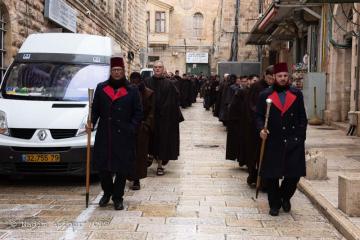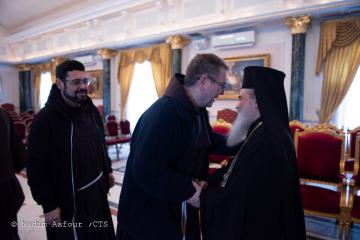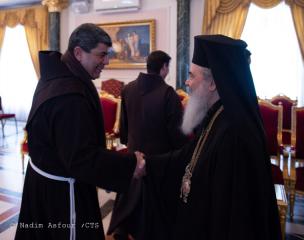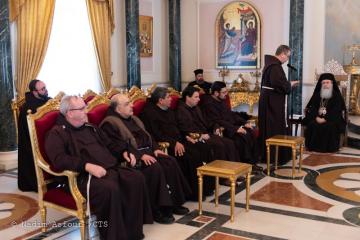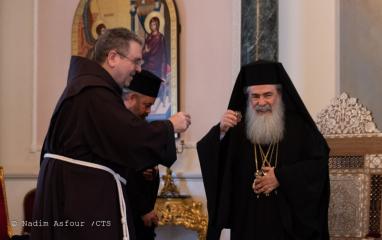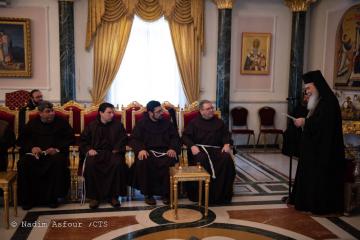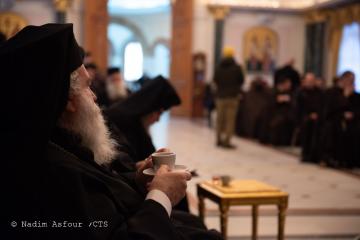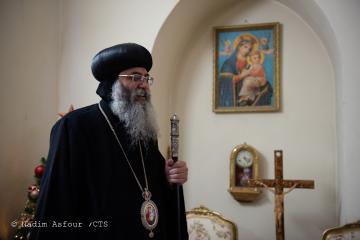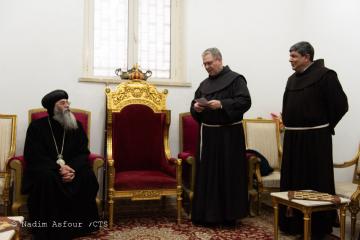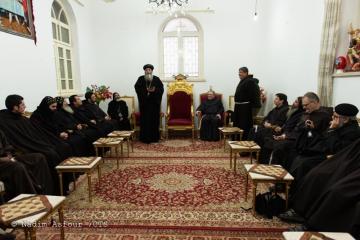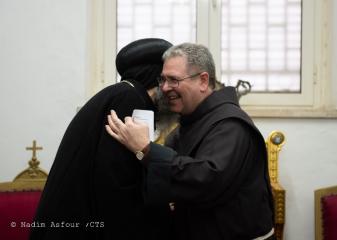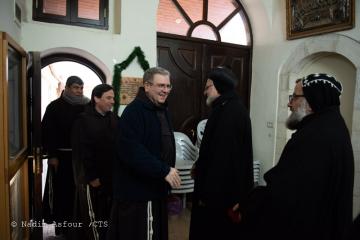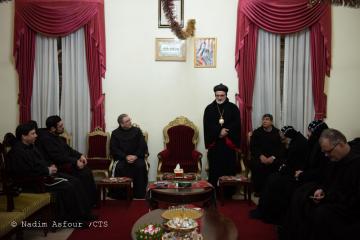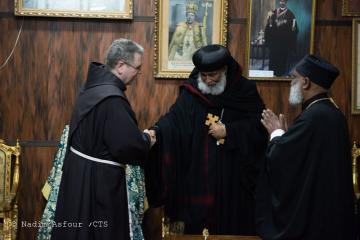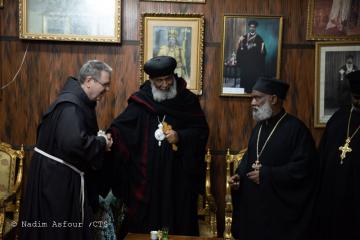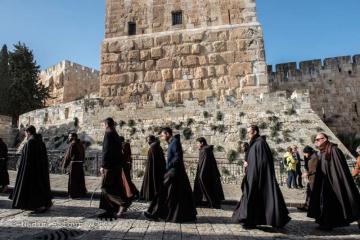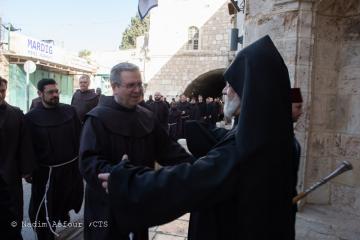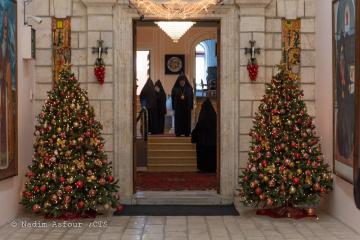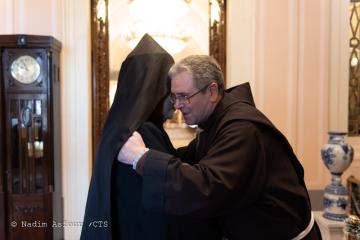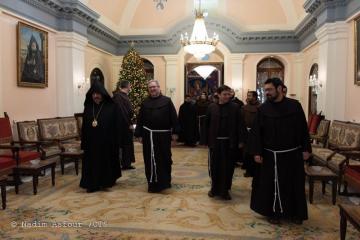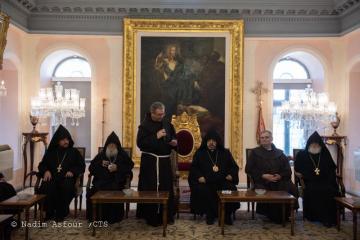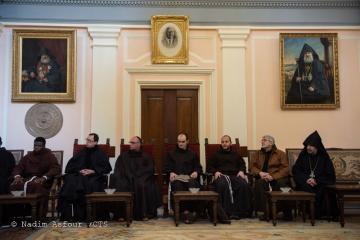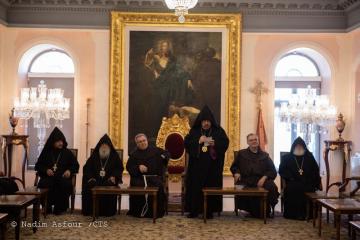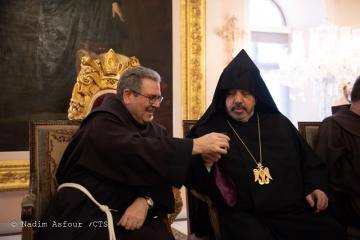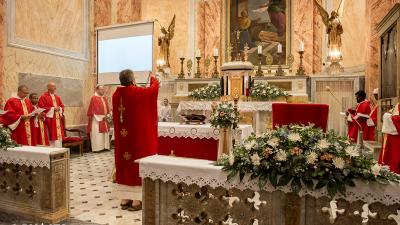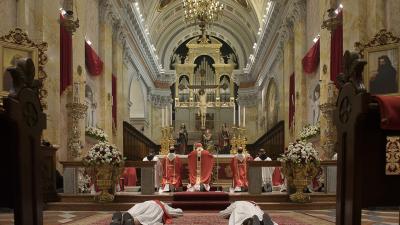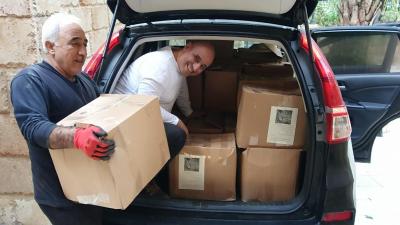
According to tradition, after the Christian Orthodox Christmas, the Custos, Fr. Francesco Patton, along with a delegation of Franciscan friars, exchanged greetings with the Orthodox communities. With that, the liturgical Christmas season for the churches of the Holy Land came to a close.
Orthodox Christmas traditionally falls on a different date because the Orthodox Church does not follow the Gregorian calendar but rather uses the Julian calendar. It can be helpful to know that it was Pope Gregory XIII in 1582 who decided to modify the calendar that was previously used and that had been introduced by Julius Caesar. Precisely because of the new calendar, in 1582 the days ranging from October 5 to 14 were lost, thus resulting in Christmas falling 13 days earlier for those who follow the Gregorian calendar.
The first to welcome the visit of the Franciscan delegation were the Greek Orthodox. Greeted by Theophilus III, the patriarch of the Orthodox Church, after the exchange of well wishes, then moved on to the greetings. In his speech, the Custos gratefully remembered Jesus who came to save us, the one who gave his life for us, thanking the community for their brotherly relationship and for having traveled to come to them. “Christmas is a great mystery that is not only theological,” said Theophilus III. “It is essential for us to remember that everything happened in this land and our being together also encourages the local community to be united.”
During his visit to the Coptic community, Fr. Francesco Patton expressed his profound desire for brotherhood and salvation that this Christmas reminded us about once again. “Bethlehem, recalled Pope Francis, is the turning point that changes history,” said Fr. Patton. “We cannot forget it.” Bishop Anba Antonios thanked him for his well wishes, also praying to the Lord that man may never forget his dignity as the son of God the Creator, who sends his son to repair human transgression.
The Franciscan delegation subsequently went to visit the Syriac community. The Custos affectionately reminded the faithful about those in Syria and Iraq who are suffering, without forgetting those who had to flee their country due to political situations. The Apostolic Administrator Issa Garbuz appreciated the commemoration, continuing the prayer by saying “May the Lord Jesus help them and assist them with His love.”
The last delegation that was visited was the Ethiopian one. “Let us celebrate together the mystery of the birth of Jesus, who makes us feel like brothers who are loved and have been saved by the same Father,” the Custos said, ending his speech with a reference to joy, peace and fraternal communion among the different communities residing in Jerusalem. “Thank you for coming,” replied Bishop Aba Embakob. “Everyone needs peace and unity, [and] Jesus comes [to us ] for this reason. We who remember him are reconciled and united in him.”
Another peculiarity that characterizes Christmas in Jerusalem is the date of the Armenian Christmas, which fell on January 19 while still following the Julian calendar. After their festivities, the Kawas of the Custody, who led the Franciscan delegation, made noise with their sticks through the streets of Jerusalem. The Archbishop Nourhan Manougian, the Armenian Patriarch, welcomed them and referenced the new mosaics discovered in the Basilica of the Nativity in Bethlehem, while he was speaking about the theology of art. “It was a privilege,” said Mons. Manougian, “to celebrate [Mass] in the Church of the Nativity surrounded by the beauty of the mosaics.” The thoughts of the community then shifted to the the enormous artistic heritage that was destroyed in countries, such as Lebanon, Yemen, Iraq and Jordan, as well as to the population of these countries. “We pray that Christmas will give us the strength to meet the challenges that the new year puts before us,” he concluded.
Giovanni Malaspina


